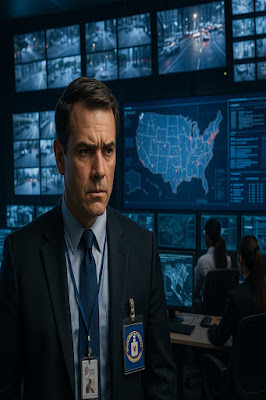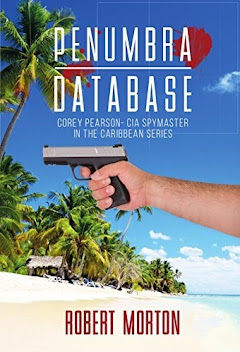 |
| The New Front Line: Where CIA Tradecraft Meets Your Hometown |
October 2001. Just weeks after planes tore
through our skies and hearts, 98 U.S. Senators signed off on something big: the
Patriot Act. Its goal? Give the government teeth to bite back against
terrorists hiding in plain sight or thousands of miles away. Fast forward, and
you’ve got 1,200+ government groups and nearly 2,000 private firms in the
business of counterterrorism. Ten thousand locations. Nearly a million
Americans holding top-secret clearances. Think about that. It’s not paranoia.
It’s infrastructure.
Now enter the Next-Generation
Identification system—NGI. A billion-dollar beast run by the FBI, built by
Lockheed Martin. It doesn’t just snap your mug; it reconstructs your entire
face from a lousy half-second of video. Every federal agency, including Homeland
Security and the entire U.S. Intelligence Community (IC), can access it.
But tech alone doesn’t stop terror. People do. That’s where Fusion Centers come in. Every state in America now has one. Fusion Centers (FCs) are nerve centers. They tap into over 240 different state, regional, and federal databases. They can monitor security cameras from highways, intersections, stadiums, and retail stores. In Chicago, surveillance cameras—infrared ones—watch the freeways every mile. Footage is stored for over a decade. One FC can access feeds from hundreds of private cameras—rail yards, trucking hubs, arenas, malls. Eyes everywhere.
Some scream “Big Brother.” And yeah,
there’s a fine line between safety and surveillance creep. But if there’s
oversight—and there better be—these systems can stop the next 9/11 before it
even becomes a plan on paper.
And here’s the kicker: the CIA’s in on it
now. For decades, the CIA was banned from touching domestic surveillance. That
changed when Fusion Centers started operating. And it changed because of one
man: Charles “Charlie” Allen.
Allen is a legend. He gave nearly five
decades to the CIA, running global operations. In his 80s, instead of retiring,
he joined the Department of Homeland Security and started embedding CIA-trained
officers into Fusion Centers across the U.S. Think of it like this—your city or
state might have an elite, covert intelligence operator working quietly
alongside your local cops. Same playbook. Different field.
Allen saw a massive hole in America’s
defenses. Foreign and domestic intelligence didn’t talk. Not fast enough, not
well enough. So he fixed it. He put boots on the ground—his kind of boots—in
all 50 states. And he built the Homeland Security Data Network (HSDN), a secure
digital artery for classified info. It scrubs the details, protects sources,
then shares what needs to be shared with local officials before
something bad happens.
Here’s how that might play out:L et’s say
the NSA intercepts a sketchy call from L.A. to Yemen. The chatter mentions
Dodger Stadium. At the same time, a CIA case officer in Yemen, who flipped a
cousin of one of the suspects, finds a map of the stadium with Farsi scribbled
all over it.
What happens next? That foreign intel gets
fed—instantly—into the secure HSDN. A Fusion Center in Los Angeles goes into
overdrive. Embedded federal officers access IC systems and push a clean,
threat-focused brief to LAPD, state police, and emergency responders. No
sources compromised. No time lost. That’s how you stop a bomb before it hits
the parking lot.
And that’s exactly why the CIA has
to work hand-in-hand with the FBI and local law enforcement. Because today’s
threats don’t fit neatly into borders. Terrorist cells don’t care about zip
codes or jurisdictional turf. They operate transnationally. They’re
ideologically driven, globally funded, and they’re aiming for chaos—nuclear,
chemical, biological, radiological. Not pipe bombs. Apocalypse.
The CIA’s strength lies overseas. But that
expertise, those networks, those assets? They mean nothing if they can’t be
deployed here—now—when threats emerge from across the ocean but land
right in our backyard.
Allen knew that firsthand. In 1984,
satellite images captured mock-ups of the U.S. Embassy in Beirut being
rehearsed in Lebanon’s Bekaa Valley. Oil drums, barriers, tire tracks. Suicide
runs in the sand. Allen passed it to the Marines. He still wonders if that
intelligence made it up the chain in time. Not long after, the embassy was
blown apart.
That lesson stuck. Intel not shared fast
is intel wasted.
Fusion Centers are Allen’s answer. They’re
the front lines in a war that isn’t fought by uniforms alone. It’s won by
connectivity, speed, and collaboration.
So yes, someone is watching. And in this
case, we should be grateful.
Because if something wicked is coming—from
a cave in Yemen, a server farm in Russia, or a condo in Dubai—it’s going to be
CIA-trained eyes inside your local Fusion Center that see it first.
And they’re not watching you.
They’re watching out for you.
Robert Morton is a member of the Association of Former Intelligence Officers (AFIO) and writes about the U.S. Intelligence Community (IC). The Corey Pearson- CIA Spymaster series blends his knowledge of real-life intelligence operations with gripping fictional storytelling. His work offers readers an insider’s glimpse into the world of espionage, inspired by the complexities and high-stakes realities of the intelligence community.






No comments:
Post a Comment